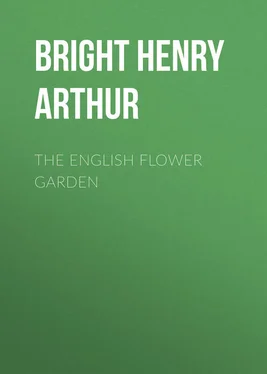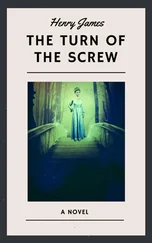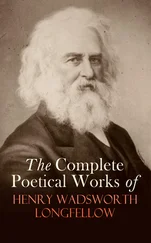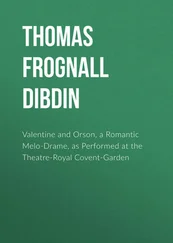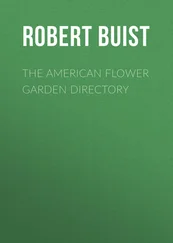Henry Bright - The English Flower Garden
Здесь есть возможность читать онлайн «Henry Bright - The English Flower Garden» — ознакомительный отрывок электронной книги совершенно бесплатно, а после прочтения отрывка купить полную версию. В некоторых случаях можно слушать аудио, скачать через торрент в формате fb2 и присутствует краткое содержание. Жанр: foreign_language, foreign_antique, foreign_prose, на английском языке. Описание произведения, (предисловие) а так же отзывы посетителей доступны на портале библиотеки ЛибКат.
- Название:The English Flower Garden
- Автор:
- Жанр:
- Год:неизвестен
- ISBN:нет данных
- Рейтинг книги:4 / 5. Голосов: 1
-
Избранное:Добавить в избранное
- Отзывы:
-
Ваша оценка:
- 80
- 1
- 2
- 3
- 4
- 5
The English Flower Garden: краткое содержание, описание и аннотация
Предлагаем к чтению аннотацию, описание, краткое содержание или предисловие (зависит от того, что написал сам автор книги «The English Flower Garden»). Если вы не нашли необходимую информацию о книге — напишите в комментариях, мы постараемся отыскать её.
The English Flower Garden — читать онлайн ознакомительный отрывок
Ниже представлен текст книги, разбитый по страницам. Система сохранения места последней прочитанной страницы, позволяет с удобством читать онлайн бесплатно книгу «The English Flower Garden», без необходимости каждый раз заново искать на чём Вы остановились. Поставьте закладку, и сможете в любой момент перейти на страницу, на которой закончили чтение.
Интервал:
Закладка:
He then quotes the garden at Moor Park, made by the Countess of Bedford, as “the perfectest figure of a garden I ever saw.” He says, “the length of the house, where the best rooms or of most use or pleasure are, lies upon the breadth of the garden:” the “great parlour” opens upon a broad terrace walk, and then three flights of steps descend to a very large parterre, with its standard laurels, its fountains, and its statues. This garden must obviously have been a garden of an architectural rather than of a horticultural character, and was not at all the ordinary garden of the ordinary country house. But the garden, which we properly associate with those described by the poets of the sixteenth and seventeenth centuries, was the garden “enclosed by walls,” within which were flower-beds and herb and kitchen gardens, divided by flowering shrubs, and green walks, and verdant alleys. It was in such a garden that Spenser’s butterfly met its untimely end, and such were
“The gardens of Adonis, fraught
With pleasures manifold.”
It was in the “pleached bower” of such a garden, where the ripe honeysuckles obscured the sun, that Shakespeare’s Beatrice was to hide. Of such a garden Andrew Marvell was thinking when he described the lilies and roses, on which Sylvio’s fawn was wont to feed. In these old gardens Cowley wrote his essays; and Herrick gathered the fancies of a poet, or the warnings of a moralist, with his early violets and fading daffodils.
And so, with but few changes, these Elizabethan gardens grew on from year to year, till a certain modification occurred when William III. introduced a taste for whatever was characteristic of Holland: statues were fewer, and hedges of box or yew, clipped into fantastic shapes, became all the fashion. These clipped hedges, indeed, were no new invention, as Sir Walter Scott appears to have thought, for Bacon had denounced them. He did “not like images cut out in juniper or other garden stuff, they be for children.” Earlier still, Leland, in his Itinerary , speaks of the Castle of Wrexhill, and says that outside “the mote” were orchards, and “in the orchards were mountes opere topiario .” 2 2 See Note II., on Ars Topiaria.
But the most famous specimen of Topiarian work in England is probably that at Levens Hall in Westmoreland. It was the work of Beaumont, a well-known gardener of his day, and dates from 1701, the last year of William III.’s reign. Colonel Graham was at that time owner of Levens, and some curious letters from his steward still exist, describing the laying-out of the grounds and the planting of the yews, of which one group was clipped into the shape of Queen Elizabeth with her maids of honour.
Long rows of trees, moreover, were now formed on the several sides of great houses, and at Cobham (the varied fortune of whose garden is singularly instructive) a semicircle of trees was planted near the west front, from which radiated five avenues. But the Dutch fashions and the Topiarian work and the long avenues were to be of no long duration. It is more than probable that political feeling, as well as mere fashion, may have had something to do with the change in many cases; but, however this may be, those who set themselves up as men of taste began to find fault with the existing style. Pope was among the first to discover that there was a monotony when grove nodded to grove and each alley had its brother, and he insisted that nature must “never be forgot,” and that one must “consult the genius of the place in all.” So he set to work to consult the genius of his own villa at Twickenham, and this genius certainly prevented anything monotonous. He had flower-beds, and slopes, and mounds, and vistas, and a cypress-grove, and a shell-temple, and an orangery, and a bowling-green, and, above all, a wonderful grotto, “finished with shells, and interspersed with pieces of looking-glass in angular forms.”
And it was about this time that Batty Langley, also of Twickenham, wrote his New Principles of Gardening, or the Laying-out and Planting Parterres, Groves, Wildernesses, Labyrinths, Avenues, Parks, &c., after a more Grand and Rural manner than has been done before . This “grand and rural manner” expresses pretty clearly the confusion we find all through his book. He must have known Pope’s villa, and probably the poet himself, and it is evident that he too intended to consult nature and the “genius” of a place. He says there is not “anything more shocking than a stiff regular garden , where, after we have seen one quarter thereof, the very same is repeated in all the remaining parts, so that we are tired, instead of being further entertained with something new as expected.” He thinks “our gardens much the worst of any in the world, some few excepted,” and is severe on the late Mr. London and Mr. Wise for having laid out gardens for the nobility “in a regular, stiff, and stuft-up manner,” with crowded evergreens and “trifling flower-knots.” But the compliments which he pays to nature are, after all, not much more than lip-homage. His principles seem very right, but his designs, of which we have very many, show that the “grand” had quite got the better of the “rural.” Even the design of “a rural garden after the new manner” consists of “a fine large plain parterre, environed with an easy, agreeable slope,” and “adorned with Apollo, Minerva, and Pallas ( sic ), the Seven Liberal Arts, Mercury, and Pytho;” then there is an octagon basin, with Neptune, and avenues and canals and more statues, and “we can never know when we have seen the whole.”
And now the period of the so-called “landscape gardeners” began, though in reality their business was rather with the grounds than with the garden proper.
Of these Kent was the first of eminence. Their idea was to destroy all the old-fashioned formalities, at the sacrifice of a certain stateliness which the style possessed, and to bring the scenery of an English park up to the house itself. But they were constantly haunted and harassed by the word “picturesque.” Was Nature more picturesque when closely followed or carefully improved? Was it the duty of the landscape gardener to arrange his clumps and belts of trees in the way in which they would look best in a picture ? This was evidently Kent’s idea, and Daines Barrington, speaking of him, says it was reserved for him “to realize these beautiful descriptions [in the Faery Queen ], for which he was peculiarly adapted by being a painter, as the true test of perfection in a modern garden is that a landscape painter would choose it as a composition.” Kent’s great work seems to have been the carrying out of the alterations at Stowe, on which Bridgeman had been originally employed, and much of the beauty of those famous grounds – which, however, were at least as artificial as natural – was owing to his taste. The two peculiarities now generally associated with his name are the planting of dead trees to look picturesque, and the constant use of Ha-ha’s (or sunk fences), which he is often said to have originated, though, as matter of fact, Batty Langley also (and I think previously) advocates their adoption. 3 3 Horace Walpole says that Bridgeman invented the sunk fence, “and the common people called them ‘Ha! ha’s!’ to express their surprise at finding a sudden and unperceived check to their walks.” He adds that Kent “leaped the fence, and saw that all Nature was a garden.”
“Capability Brown” was perhaps the next most noted landscape gardener. His idea was always to improve nature, and he was particularly strong in artificial lakes and canals, with rather formal clumps of trees. He had many disciples, and it seemed as if half the fine places in England were to be reformed on the new principles.
Интервал:
Закладка:
Похожие книги на «The English Flower Garden»
Представляем Вашему вниманию похожие книги на «The English Flower Garden» списком для выбора. Мы отобрали схожую по названию и смыслу литературу в надежде предоставить читателям больше вариантов отыскать новые, интересные, ещё непрочитанные произведения.
Обсуждение, отзывы о книге «The English Flower Garden» и просто собственные мнения читателей. Оставьте ваши комментарии, напишите, что Вы думаете о произведении, его смысле или главных героях. Укажите что конкретно понравилось, а что нет, и почему Вы так считаете.
